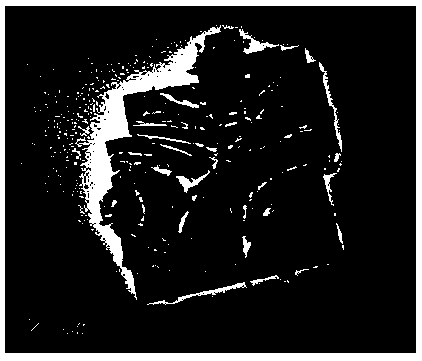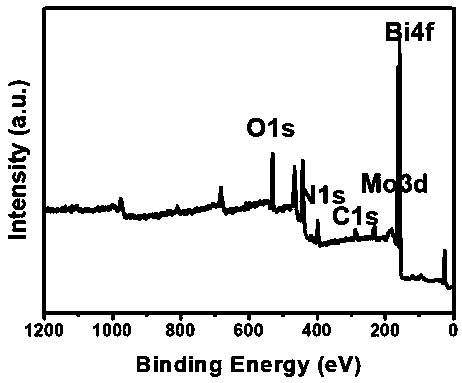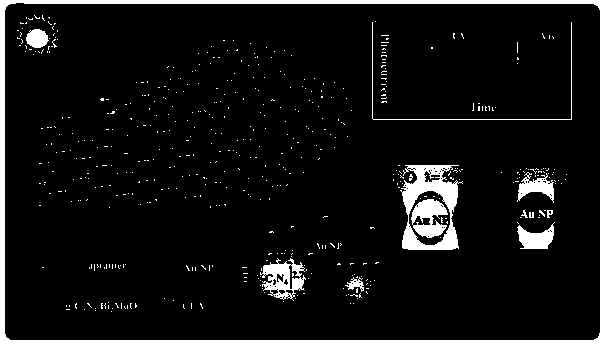Analysis method based on heterojunction composite material for detecting photoelectric chemical adaptor of carcino-embryonic antigen
A composite material, carcinoembryonic antigen technology, applied in material excitation analysis, analysis material, measurement device and other directions, can solve the problems of long detection time and high detection cost, and achieve low cost, good selectivity, simple structure and preparation process. Effect
- Summary
- Abstract
- Description
- Claims
- Application Information
AI Technical Summary
Problems solved by technology
Method used
Image
Examples
Embodiment 1
[0025] 1. g-C 3 N 4 preparation of
[0026] Weigh 2.0 g of dicyandiamide and place it in a crucible, and heat it to 550 °C for 4 h in a muffle furnace at 1.0 °C / min. After the reaction is over, the crucible is naturally cooled to room temperature, and ground to powder for use.
[0027] 2. g-C 3 N 4 / Bi 2 MoO 6 Preparation of complex
[0028] Weigh 0.5 g g-C 3 N 4 Dispersed to contain 2 mmol Bi(NO 3 ) 5 ·5H 2 O in 25 mL of distilled water. Under vigorous stirring, 0.121g Na 2 MoO 4 2H 2 O was added to the above solution, and then the resulting solution was transferred to 50 mL of polytetrafluoroethylene and heated to 160 °C for hydrothermal reaction for 12 hours. After cooling to room temperature naturally, the yellow solid product was collected by centrifugation, washed three times with water and ethanol, and dried. available from figure 1 See g-C 3 N 4 and Bi 2 MoO 6 Well combined together, enhance the separation of electron holes.
[0029] 3. Preparati...
PUM
 Login to View More
Login to View More Abstract
Description
Claims
Application Information
 Login to View More
Login to View More - R&D
- Intellectual Property
- Life Sciences
- Materials
- Tech Scout
- Unparalleled Data Quality
- Higher Quality Content
- 60% Fewer Hallucinations
Browse by: Latest US Patents, China's latest patents, Technical Efficacy Thesaurus, Application Domain, Technology Topic, Popular Technical Reports.
© 2025 PatSnap. All rights reserved.Legal|Privacy policy|Modern Slavery Act Transparency Statement|Sitemap|About US| Contact US: help@patsnap.com



